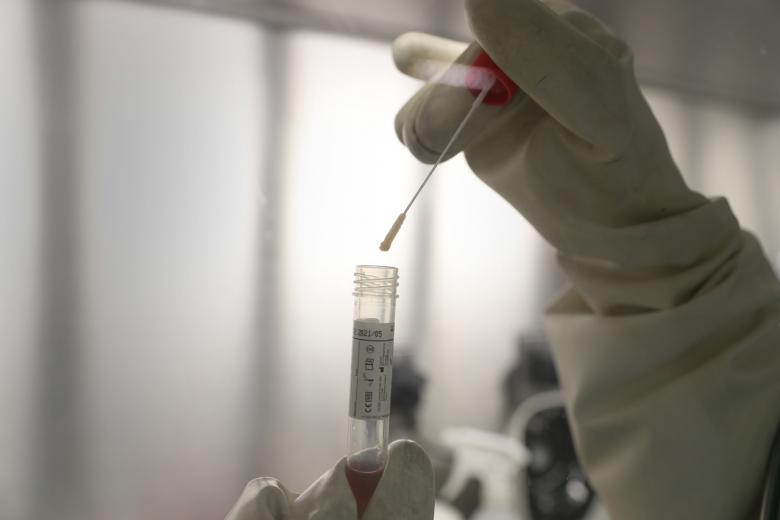askST: What do we know about the Covid-19 BA.2 Omicron sub-variant?
Sign up now: Get ST's newsletters delivered to your inbox

The Omicron sub-variant was the driver of Singapore's earlier Covid-19 wave.
PHOTO: ST FILE
Follow topic:
SINGAPORE - As the daily number of Covid-19 cases in Singapore subsides, many are still keeping an eye out for a highly transmissible Omicron sub-variant known as BA.2, which was the driver of the Republic's earlier Covid-19 wave.
Here's what we know so far about the sub-variant.
1. What is it?
As viruses mutate, they form new variants. These variants can sometimes split into sub-lineages. For instance, the Delta variant comprises 200 different sub-variants.
The Omicron variant generally comes in three genetically distinct sub-variants, with BA.1 and BA.2 the most predominant.
These sub-lineages are not new, and each branch of the Omicron variant has its own set of unique mutations.
The BA.1 sub-variant was the first that broke out and BA.2 took longer to become significant.
2. How transmissible is it?
Preliminary studies suggest that BA.2 is more transmissible than BA.1, even though all the Omicron sub-variants are highly contagious.
It has been reported that scientists suspect that BA.2's rapid growth is due to its mutations. In the gene for the spike protein on the surface of the virus, BA.2 has eight mutations not found in BA.1.
For instance, a Danish pre-print published on Jan 30 about a study of 8,500 households said scientists found that people with BA.2 were substantially more likely to infect others in the same household compared with BA.1.
Pre-prints are articles which have yet to be evaluated and peer reviewed by the medical community.
In a Hong Kong study whose results were published on March 10, researchers found that the virus doubled every 1.28 days during a BA.2 outbreak in a public housing complex.
The outbreak was promptly controlled with the lockdown of three buildings within the housing estate.
3. Will the BA.2 sub-variant lead to more severe illness?
The chances of becoming severely ill, hospitalised or dying are significantly lower with the Omicron variant than the Delta or earlier variants.
So far, research indicates that BA.2 is no different from BA.1 in this aspect.
Vaccinations and infections with earlier Covid-19 variants have given many people a certain degree of immunity.
It was also reported that Omicron is less severe because it is less harmful to the lungs.
This is unlike previous variants, which often cause more scarring on the lungs and serious breathing difficulty.
4. Are vaccines still effective?
BA.2 does not seem to change what is currently known about the Omicron variant. It is known that Omicron is somewhat better than other variants at causing breakthrough infections of vaccinated people, which is one of the reasons driving the case surge to its record highs.
However, the vaccines do continue to provide substantial protection against infection, especially severe disease.
Booster shots make the protection even more robust.
In a study reported in a pre-print from Qatar posted on March 13, researchers discovered that booster shots were about 40 per cent effective against a BA.1 or BA.2 infection one month after injection. However, the boosters were about 90 per cent effective against hospitalisation.
The World Health Organisation said on its website that reinfection with BA.2 following infection with BA.1 has been documented. However, initial data suggests that infection with BA.1 provides strong protection against reinfection with BA.2.


